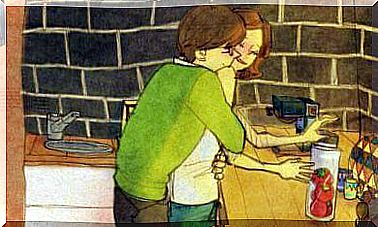Social Intervention In The Stages Of Mourning

We have all experienced the loss of a loved one. Although attitudes about death have changed over time, it is still difficult to deal with the departure of a loved one, especially when it is unexpected or traumatic. Grieving may require help.
Sometimes we need support to get over this situation. Although we are all, to a greater or lesser extent, prepared to deal with these situations, at times we can get stuck in the process. This is why the training of professionals in social intervention in the stages of bereavement is essential.
Grieving is a process that we experience following the loss of someone or something that we love (Moreno, 2002). This process is a normal manifestation in these situations.
The reactions felt are of a physical, emotional and social nature. This can range from a feeling of temporary sadness to complete desolation, which in the most severe cases can last for years or even a lifetime (Raphael, cited in Echeburúa and Corral, 2001).

The stages of mourning
Each person grieves in a unique way. We can say that this is a dynamic process because it has several stages. Psychiatrist Kubler-Ross (1969) lists these stages. They are the following:
- Denial
- Anger
- Negotiation
- Depression
- Acceptance
It sometimes happens that the characteristics of the process lead us to perceive “pathological mourning”. Pathological grief is primarily characterized by the intensity and duration of the emotional reaction. Unlike normal grief, the characteristics of pathological grief, according to Echeburúa and Corral (2001), are:
- More intense symptoms.
- Reaction that lasts beyond the year of the loss.
- Appearance of symptoms not typical of normal bereavement : hallucinations, delusions, social isolation, sleep and appetite disturbances, etc.
Social intervention in the stages of mourning
When it comes to social intervention, we must first remember the importance of prior knowledge of the types of grief, their causes and consequences. While life experiences can help us understand the situation grieving people find themselves in, it does not guarantee a good intervention.
Thus, two aspects must be highlighted during the intervention: bereavement counseling and bereavement therapy. Let’s take a look at this in depth.
Bereavement counseling
Bereavement counseling professionals specialize in human behavior during grief. The objectives of this level of intervention are as follows (Worden, cited in González, 2011):
- Provide adequate information on the grieving process.
- Complete the unfinished business of the deceased.
- Increase the reality of loss by trying to avoid or overcome denial.
- Help the bereaved to deal with expressed and latent emotions. Facilitate emotional expression.
- Help the bereaved overcome the obstacles that make it difficult to readjust after the loss.
- Help the bereaved to say goodbye and return to normal life.
The purpose of this type of intervention is therefore to help the bereaved to realize the loss and to integrate it into their personal history. And this, by providing adaptation strategies under continuous surveillance, surveillance which makes it possible to identify possible pathological behaviors.

Bereavement therapy
This more specialized model requires more knowledge. This type of intervention aims to promote the development of bereavement in order to avoid possible complications in the process.
According to the same author cited above, it is a question here of basing ourselves on the identification and resolution of separation conflicts that make it impossible to perform the corresponding tasks in people whose bereavement seems non-existent, is delayed, excessive or prolonged. This social intervention is relevant in the following cases:
- Mourning complicated with manifestation of prolonged grief.
- Presence of a somatic symptom or camouflage.
- Overreaction.
Although death is inevitable, sometimes it is very difficult to cope with the pain and suffering it causes. It is not easy to see the bright side of things in such a situation, but all experience teaches us very important lessons.
As Bermejo (2005) says, mourning can claim our greatest and most beautiful truth: the value of love. And our most tragic truth: the radical loneliness that characterizes us. The death of a loved one inevitably confronts us with the mystery of life and reminds us of our own physical finitude. It imposes silence, emptiness and inevitable reflection on us.
In short, overcoming grief is knowing how to adapt to the circumstances of life. It requires resilience and reflection. It is not a question of forgetting, but of learning to live with the absence.










